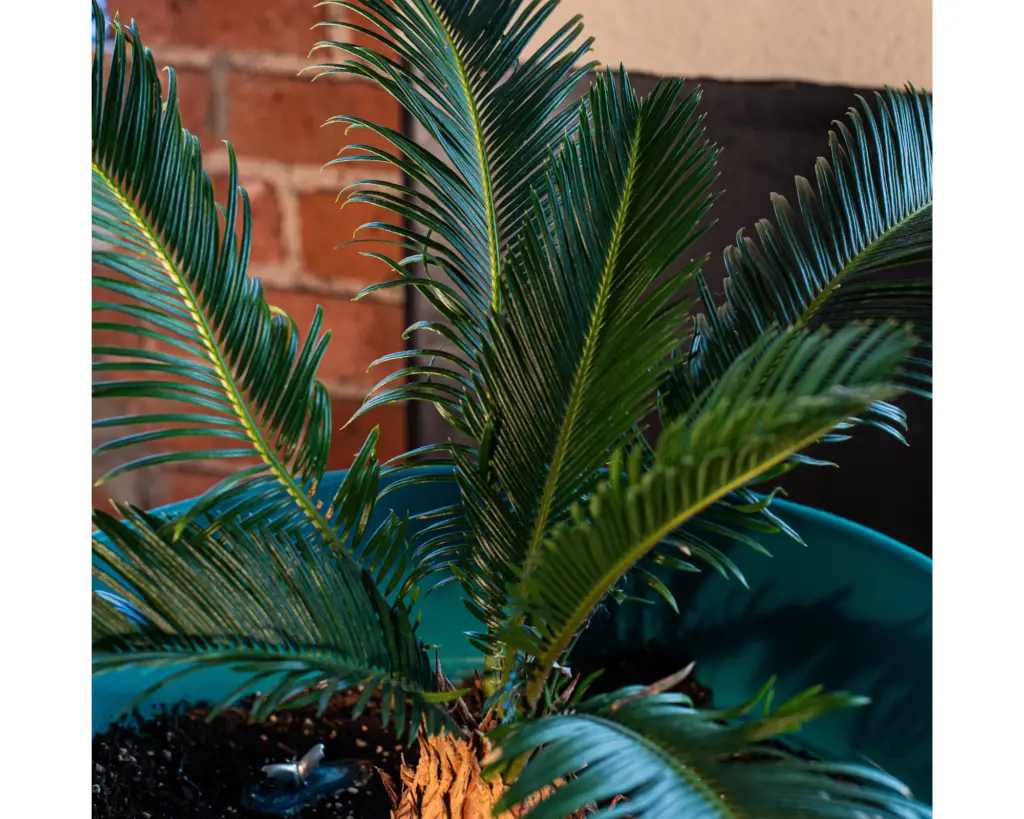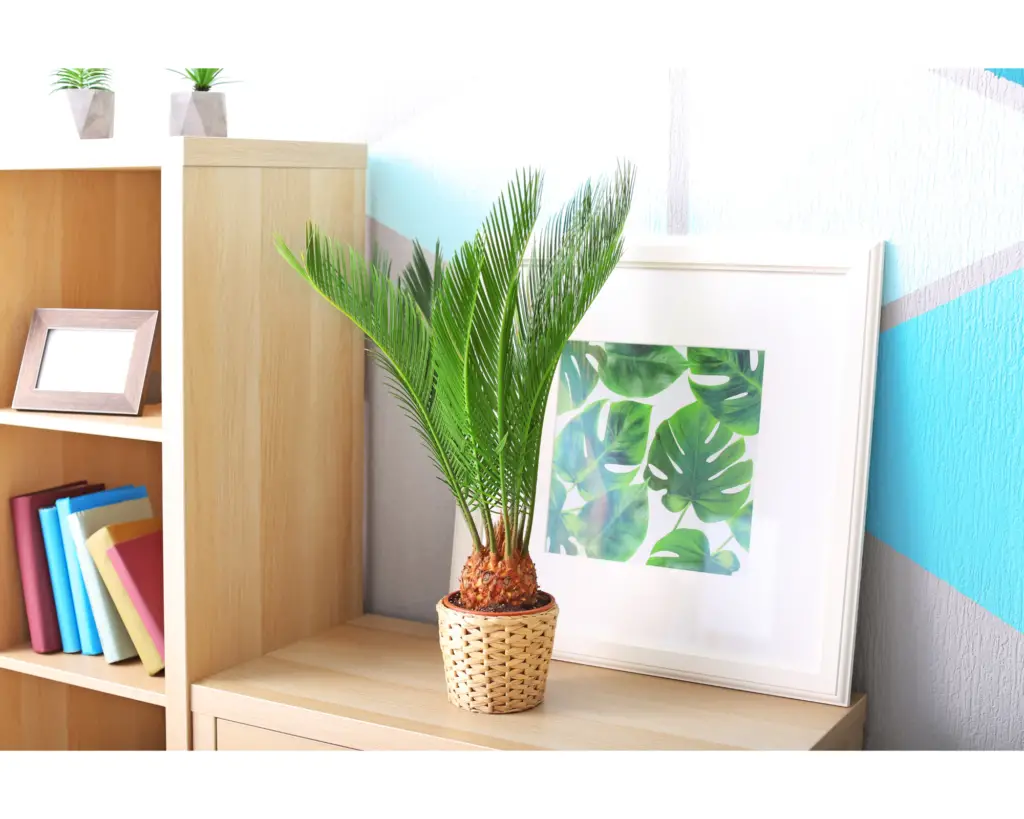The Japanese Sago Palm (Cycas revoluta), known as the King Sago Palm can add a tropical touch to any indoor space. It is native to Japan and is a slow-growing, long-lived plant that can thrive for decades with proper care. In this article, we will discuss the benefits of having a Japanese Sago Palm as a houseplant, how to care for it, and some tips for maintaining its beauty.
Table of Contents
Benefits of having a Japanese Sago Palm as a houseplant
- Aesthetic value: The Japanese Sago Palm is a strikingly beautiful plant with a unique appearance that can add a touch of elegance to any room. Its sturdy trunk and feathery fronds create a dramatic effect that can be enhanced with the right pot and placement.
- Air purification: Like many plants, the Japanese Sago Palm is known for its air-purifying qualities. It can remove harmful pollutants from the air, including formaldehyde, benzene, and toluene, which are commonly found in household products like paints, adhesives, and cleaners.
- Low maintenance: Despite its exotic appearance, the Japanese Sago Palm is surprisingly easy to care for. It is a slow-growing plant that can tolerate low light and neglect, making it an ideal choice for busy or inexperienced plant owners.
Caring for a Japanese Sago Palm
Watering and light
The Japanese Sago Palm is drought-tolerant and should be slightly underwatered rather than overwatered. Water it only when the soil feels dry, and make sure to allow excess water to drain away to prevent root rot. While the Japanese Sago Palm can tolerate low light, it thrives in bright, indirect light. Avoid placing it in direct sunlight, as this can scorch its fronds and damage the plant.
Temperature and humidity
The Japanese Sago Palm prefers warm temperatures and high humidity. It can tolerate temperatures as low as 15°C (60°F), however should be kept between 20°C (68°F) and 30°C (86°F). To increase humidity, mist the plant’s fronds regularly or place a tray of water near it.
Soil and fertilisation
The Japanese Sago Palm prefers well-draining soil that is rich in nutrients. Use a soil mix that contains peat moss, perlite, and sand, and make sure the pot has drainage holes to prevent waterlogged soil. The Japanese Sago Palm benefits from regular feeding with a balanced fertiliser during the growing season (spring and summer). Use a slow-release granular fertiliser or a liquid fertiliser diluted to half strength every two weeks.


Tips for maintaining the health and beauty of a Japanese Sago Palm
Pruning and pest control
Prune away any yellowing or damaged fronds with a sharp pair of scissors or pruning shears. Be careful not to cut into the plant’s central stem or crown, as this can damage the plant. The Japanese Sago Palm is generally pest-free, but it can occasionally be affected by spider mites, scale insects, or mealybugs. Treat any infestations with a horticultural oil or insecticidal soap, following the manufacturer’s instructions.
Repotting and propagation
The Japanese Sago Palm is a slow-growing plant that can remain in the same pot for several years. However, if the plant becomes too large for its pot or if the soil has become compacted, it may be time to repot it. Use a pot that is one size larger than the current pot and fill it with fresh soil mix. The plant can be propagated from offsets, which are small plants that grow from the base of the parent plant. Carefully remove the offset from the parent plant and plant it in a pot with fresh soil mix. Keep the soil moist but not waterlogged and place the new plant in bright, indirect light until it establishes itself.
Avoid cold drafts
The Japanese Sago Palm is sensitive to cold drafts, so make sure to keep it away from windows and doors that may let in cold air. A sudden drop in temperature can cause the fronds to turn yellow and drop off.
Protect from pets and children
The Japanese Sago Palm is toxic to pets and children if ingested, so it is important to keep it out of reach of curious pets and children. If you suspect that your pet or child has ingested any part of the plant, seek medical attention immediately.
Clean the leaves
Over time, dust and debris can accumulate on the fronds of the Japanese Sago Palm, reducing its aesthetic appeal and potentially hindering its ability to absorb light. To clean the leaves, wipe them gently with a damp cloth or sponge, taking care not to damage the fronds.
Conclusion
The Japanese Sago Palm is a beautiful and low-maintenance plant that can thrive in a variety of indoor environments. With its air-purifying qualities and striking appearance, it is a popular choice for homeowners and plant enthusiasts alike. To care for a Japanese Sago Palm, provide it with well-draining soil, bright, indirect light, and regular watering and fertilising.
Keep it away from cold drafts and pests, and take care to protect pets and children from its toxic properties. With the right care, a Japanese Sago Palm can live for decades, providing beauty to any indoor space.

